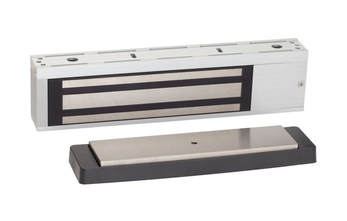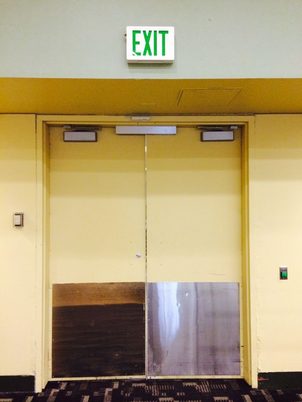|
Contributed by Lori Greene This issue continues to arise on a regular basis, so I’m hoping to clarify it once and for all. The sections entitled “Access-Controlled Egress Doors” – present in both NFPA 101–Life Safety Code and past editions of the International Building Code (IBC), have led some to believe that all doors equipped with access control readers must comply with these sections of the model codes. Although the Authority Having Jurisdiction (AHJ) has the final say on matters of code-compliance, it’s not the intent of the model codes for these sections to apply to all access-control doors or to all doors with electrified hardware. The requirements of the model codes specific to access-controlled egress doors are essentially the same, but in the 2015 edition of the IBC, the section title was changed to Sensor Release of Electromagnetically Locked Egress Doors. The reason for the change was to help avoid confusion about when this section should be applied. The corresponding section in NFPA 101 is still called Access-Controlled Egress Doors, but the two sets of requirements are very similar despite the differing section titles. What’s an access-controlled egress door? These two sections apply to electrically/electromagnetically locked doors, where the lock is released by a sensor detecting an approaching occupant. The most common type of lock that is used in this application is an electromagnetic lock (AKA mag-lock), but the section could also be used for other types of locks that are released by a sensor – for example, a power bolt. The key is that the section only applies to locks that are released by a sensor which detects an approaching occupant and unlocks the door. Most other types of electrified hardware – electromechanical locks, electrified panic hardware, electric strikes – are released by “normal” means, like turning a lever or pushing on the touchpad of the panic hardware. These are not access-controlled egress doors. What about mag-locks released by other means? Not all doors with electromagnetic locks are released by a sensor or required to comply with these sections of the model codes. Both the IBC and NFPA 101 also include separate sections that apply to electrically/electromagnetically locked doors that are released by door-mounted hardware incorporating a switch to release the electrified lock. Many locks used for access control are released without the use of a switch, but because mag-locks require a separate release device – a sensor or a switch in the door-mounted hardware – mag-lock applications are typically released by one of these two types of switches. In NFPA 101, the section for mag-locks released by a switch in the door-mounted hardware is called Electrically Controlled Egress Door Assemblies. In the IBC, this section is currently called Electromagnetically Locked Egress Doors, but beginning with the 2018 edition of the IBC, this section will be called Door Hardware Release of Electrically Locked Egress Doors. What are the requirements for each of these applications? To re-cap, applications with electromagnetic locks used for access control typically fall into one of these two categories (not both)*:
Electrified/electromagnetic lock released by a sensor that detects an occupant approaching the door and unlocks the door for egress
Electrified/electromagnetic lock released by door-mounted hardware that incorporates a switch to immediately release the lock for egress
Both of these types of electrified locks – those released by a sensor and those released by door-mounted hardware, must be allowed by the use group or occupancy classification; they are not allowed in every type of building. Refer to the applicable code for the list of occupancy types where these locks are acceptable, along with specific requirements regarding emergency lighting and the activation of manual fire alarm boxes. Some editions of the model codes also require the door locking system units to be listed in accordance with UL 294 – Standard for Access Control System Units. What about other types of locks used for access control? If an electrified lock in an access control system allows free egress without the use of a sensor or a switch in the door-mounted hardware, it is not required to comply with either of these model code sections. Because the electrified hardware allows free egress by turning a lever or pushing the touchpad of a panic device, it would be considered a “normal” door as long as it complies with the model code requirements for egress – one-operation to release the latch, releasing hardware mounted between 34 inches and 48 inches above the floor, and which requires no tight grasping, pinching, or twisting of the wrist and no key, tool, special knowledge, or effort to operate. The 2015 IBC Commentary supports this interpretation, stating: “The functions of an ingress control locking system are not addressed in the codes and are unrelated as long as egress is provided as required or permitted by this section and other applicable provisions of the code.” State and local codes may vary from what is required by the model codes, so it’s important to check the code requirements for your project’s jurisdiction. Refer to the model codes for additional information; the IBC Commentary and NFPA 101 Handbook offer explanations to clarify the intent of the codes. The AHJ may be consulted for assistance with the requirements for a particular location. * Note that mag-locks may also be used in delayed egress locking systems, controlled egress systems in health care facilities, and fail-safe systems for elevator lobby doors (NFPA 101 and some state/local codes only). Each of these applications has a separate set of code requirements that would apply instead of the sections discussed in this article. Electromagnetic locks may also be used on stair doors that must meet the stairwell reentry requirements. Typically, these doors would comply with either the section for sensor-release or door-hardware release on the egress side of the door (or the delayed egress or controlled egress sections if applicable), and would comply with the stairwell reentry requirements on the stair side. For related content, be sure to read Lori Greene's blog, iDigHardware, including this article that covers other code sections that apply to electrified hardware: http://idighardware.com/2015/02/decoded-electrified-hardware-refresher/. (This post will be published in the August 2017 issue of 'Doors & Hardware', DHI Magazine for Door Security & Safety Professionals)
2 Comments
Leave a Reply. |
AboutLet's Fix Construction is an avenue to offer creative solutions, separate myths from facts and erase misconceptions about the architecture, engineering and construction (AEC) industry. Check out Cherise's latest podcast
Get blog post notifications hereArchives
March 2022
Categories
All
|



 RSS Feed
RSS Feed
